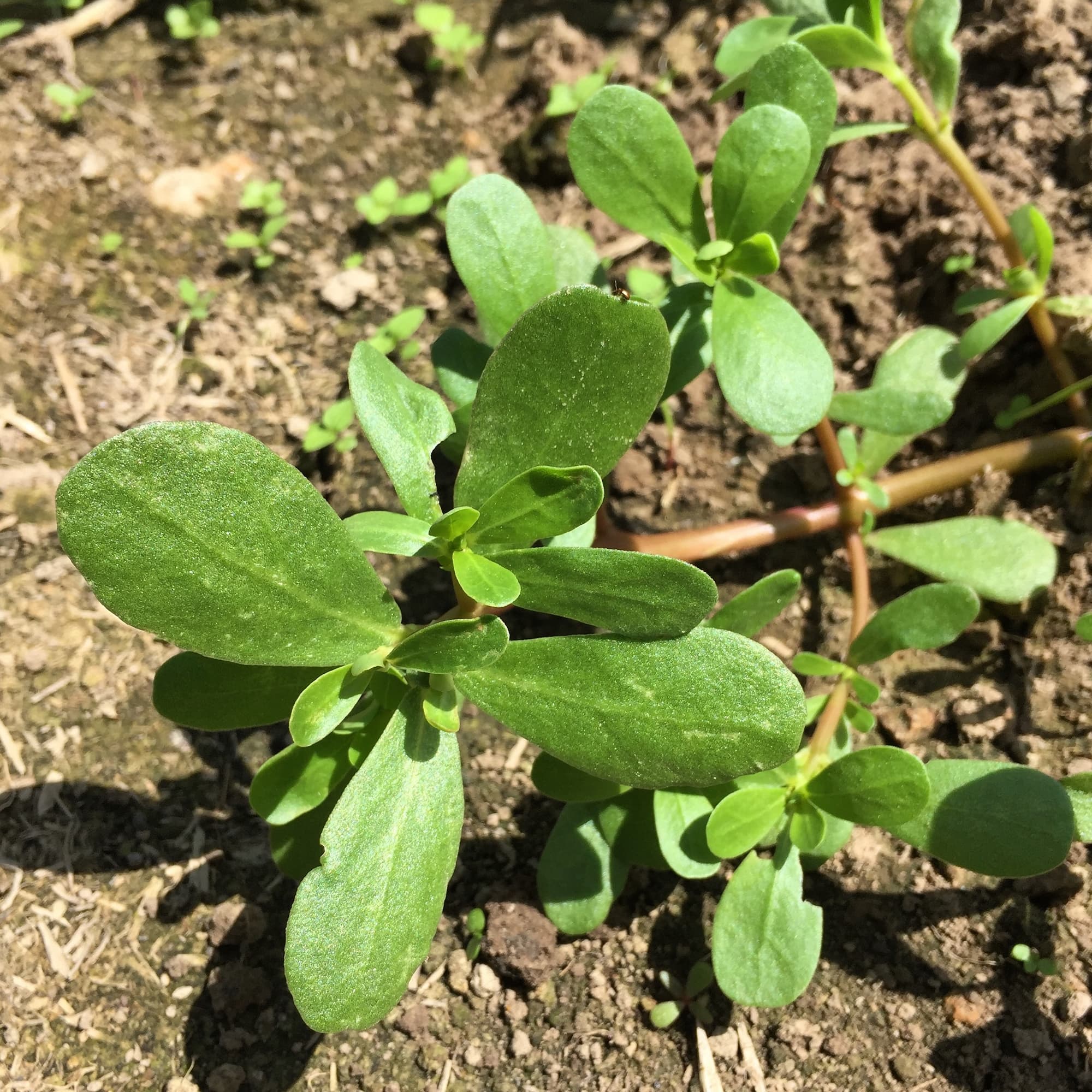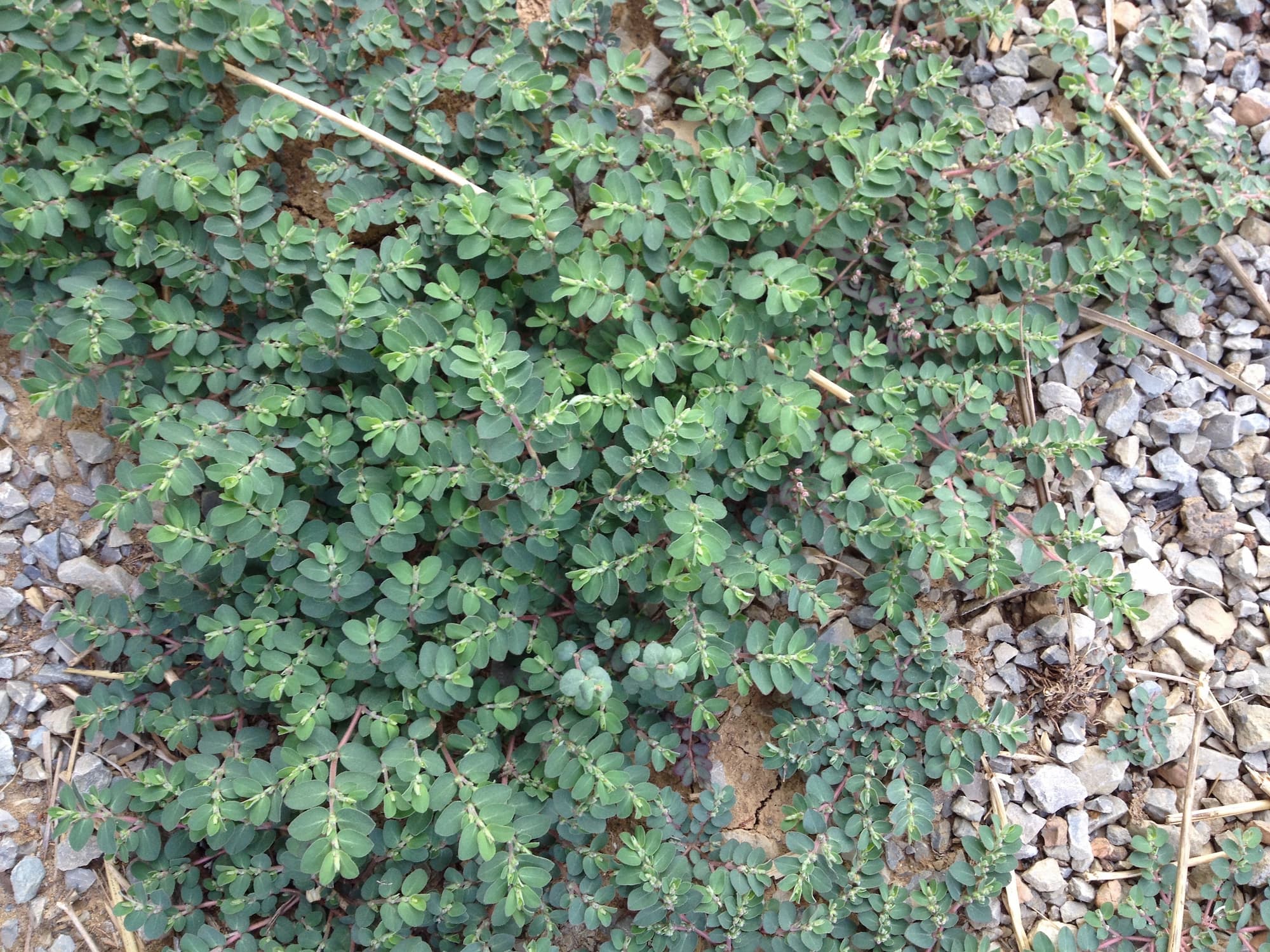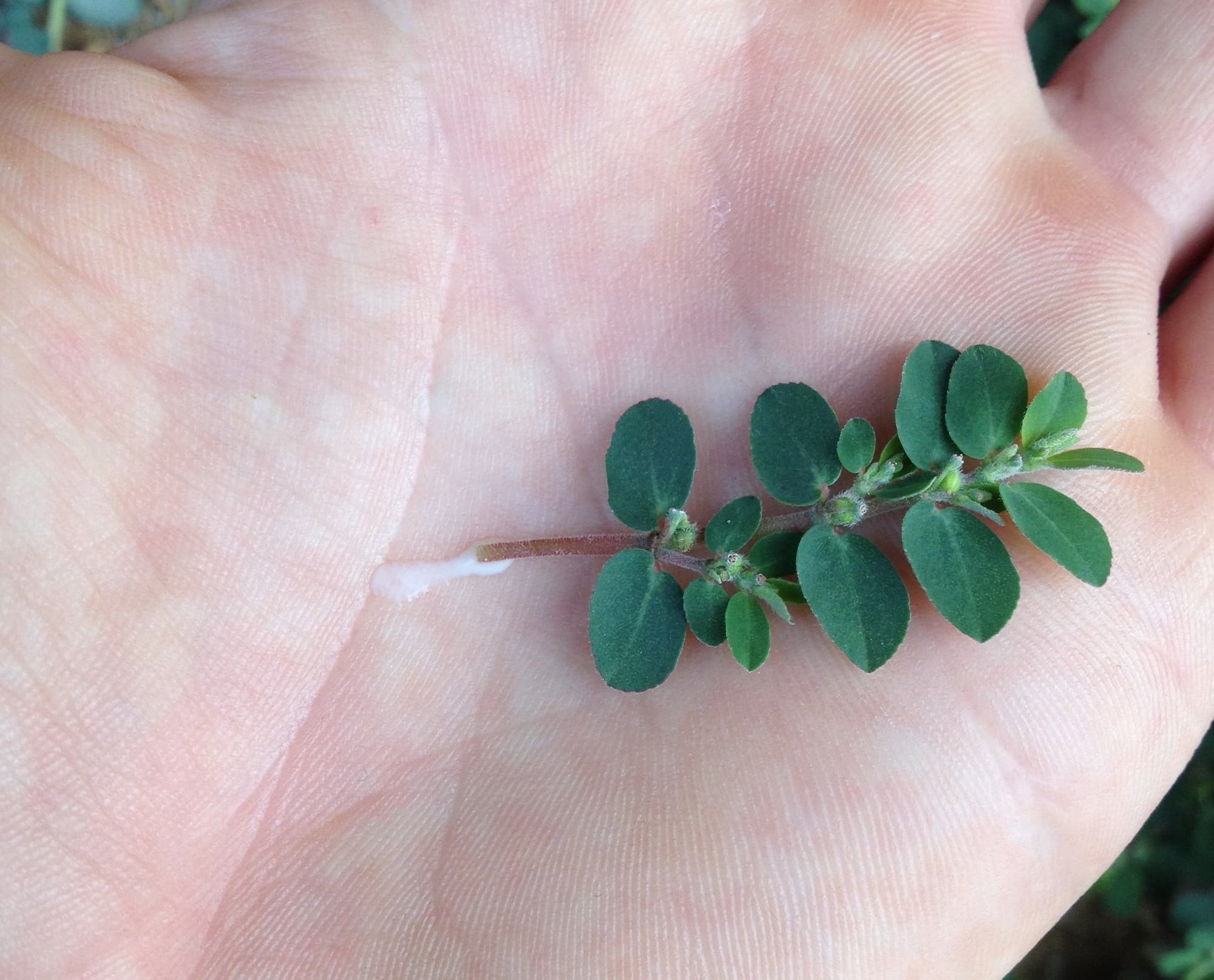How to Identify Purslane — Foraging for Edible Wild Garden Weeds
- Authors
- Name
- Sam Sycamore
- @tanoaksam
- Published on
- Last updated
What is purslane?
Purslane (Portulaca oleracea) is a fun and unique treat that you'll only find in the hottest few months of the year. Its succulent leaves resemble jade in miniature form, but it crawls and sprawls across bare ground via its distinctive reddish-purple, pipe-like stems.

Purslane thrives in full sun and maximum summer heat, and loves to take over bare soil.
Is purslane edible?
Yes, the fleshy succulent leaves are edible.
Purslane is only just beginning to receive the credit it's due among the hippest of the hip foragers and foodies in North America (ahem), but it's well known as a powerhouse of nutrition in the Mediterranean, where it is also ubiquitous. It contains more omega-3 fatty acids and vitamin E than any other leafy green ever analyzed, and in many other categories its nutrient content is equal to or greater than the almighty cultivated spinach.
In addition to being a delicious food in its own right, purslane is also touted as a treatment for digestive and urinary issues, including urinary tract infections. I'm told it can offer relief from diarrhea, but I've not personally tested this claim myself. What's more, it can be used topically to treat sunburns in the same way you'd use aloe vera.
When to gather purslane
Farmers and gardeners will begin to notice purslane colonizing their recently disturbed soils in the summertime, because purslane won't germinate until soil temperatures are consistently above 80 °F (~27 °C). Once established it is very drought tolerant as you might expect, though it can quickly spiral out of control given full scorching sun and ample moisture.
How to identify purslane
Purslane's thick, fleshy stems and jade-like leaves make it exceptionally easy to identify, and when you stumble upon a healthy patch you'll know it right away. Given direct sunlight and minimal competition, a single purslane plant will spread in every direction until it forms a thick, dense mat. It won't root at the nodes of its stems like other sprawling plants, but it will happily clone itself if you tear a stem and leave it on bare ground.
Purslane lookalikes
Spurge
The only superficial lookalike to be aware of is spurge (particularly "spotted spurge," Euphorbia maculata) which has a similar growth habit and is often found growing right alongside purslane. Spurge is almost always smaller than purslane, its stems are thin and woody, and its leaves lack purslane's distinctive fleshiness.

Spurge: similar features in the same season, but obviously not purslane upon inspection.
When in doubt, there's one fool-proof way to tell the difference: tear a stem. If it exudes a milky white sap, it is undoubtedly spurge. That sap, along with the rest of the plant, is poisonous, and it can mildly irritate your skin if you come in contact with enough of it. If you accidentally consume spurge, be prepared for vomiting, diarrhea, and possibly a trip to the emergency room. Don't eat spurge.

Spurge's milky sap is a dead giveaway that it's not purslane.
How to harvest and eat purslane
Purslane will wilt very quickly when harvested, so you'll want to use it as quickly as possible. I like to graze on the raw greens while I'm working outdoors for a refreshing and thirst-quenching treat.
In addition to eating raw and sautéing, it's great for fermenting. You can also dry it and grind it up into a savory, nutrient-dense powder for thickening soups.
How to sustainably work with purslane
The black seeds that follow purslane's small yellow flowers almost require a microscope to see. Purslane produces copious amounts of seeds in tiny little "cups" that will spill all over your soil when you go to pull it up, and this is a big part of its reputation as a nuisance.
If you want to encourage purslane to grow in your own garden, it couldn't be easier. Find a rogue plant in your soil? If you pull it up and set it elsewhere, chances are good that it will sprout new roots in its new residence—same goes if you clip a few stems, drop them in a new location and give them some tender loving care.
If you're not a stickler about "weeds" cluttering up your garden, I think you'll find purslane to be a welcome addition as a hardy ground-cover that will hold moisture at soil level and suppress more troublesome weeds, while competing little—if at all—with the roots of your cultivated plants. A beautiful, delicious, living mulch requiring no work. Who could ask for more?

Notice the spurge growing underneath the purslane in this photo. Don't get them mixed up!
Be warned, though, that a once-friendly purslane patch can become a serious frustration if it gets out of control. The simplest way to keep your purslane in check is to harvest it before it develops flowers so that you won't risk cluttering up your seed bank for future seasons. If you want to save some seed, pay very close attention to those little "cups" from day to day so you can get to the seeds before they spill out onto the ground. Consider growing a separate specimen in a container for saving seed if you're really concerned about keeping it under control in your garden.
Introduction to Foraging
Did you find this article helpful?
This is an excerpt from Introduction to Foraging: A Beginner's Guide to Gathering Wild Foods With Confidence.
Diving into the wonderful world of wild foods can be intimidating, especially if you don't have much experience working with plants.
Introduction to Foraging was written with the absolute beginner in mind, and with the goal of getting you out into the world gathering wild foods right away.
To learn everything you need to know to begin foraging safely, sustainably, and confidently, check out the book here. Happy hunting!